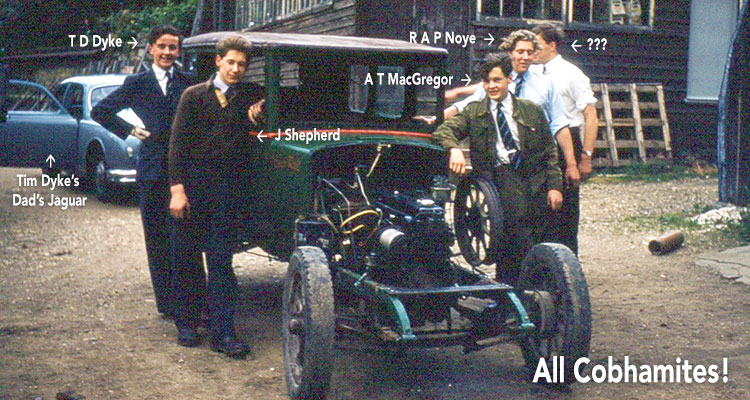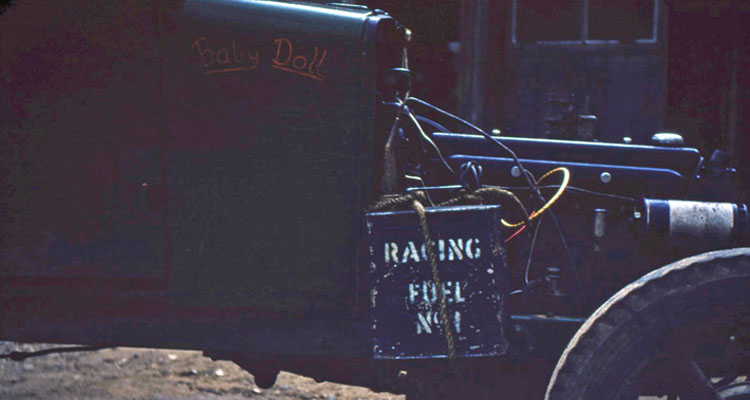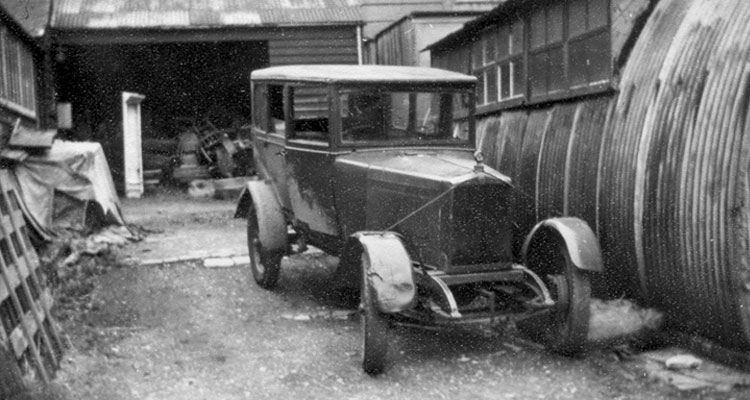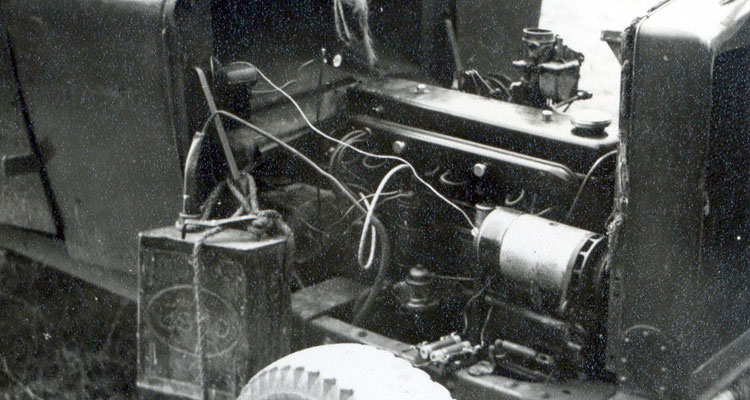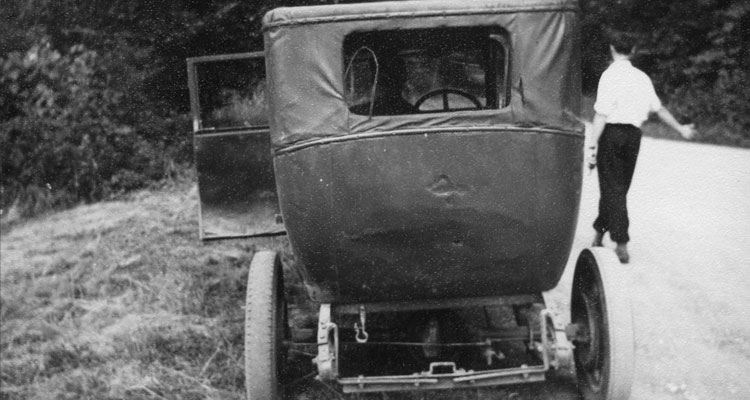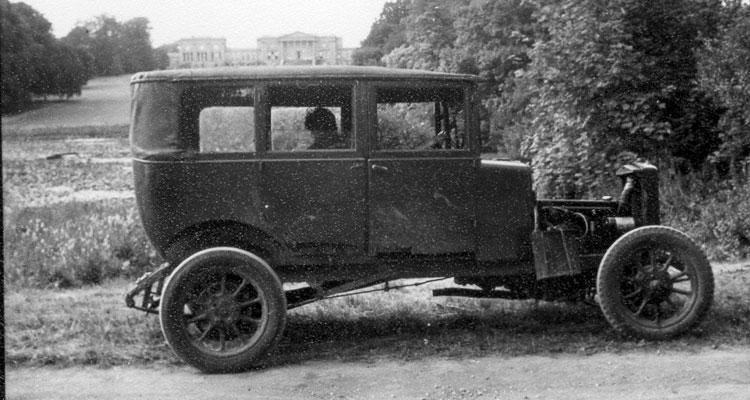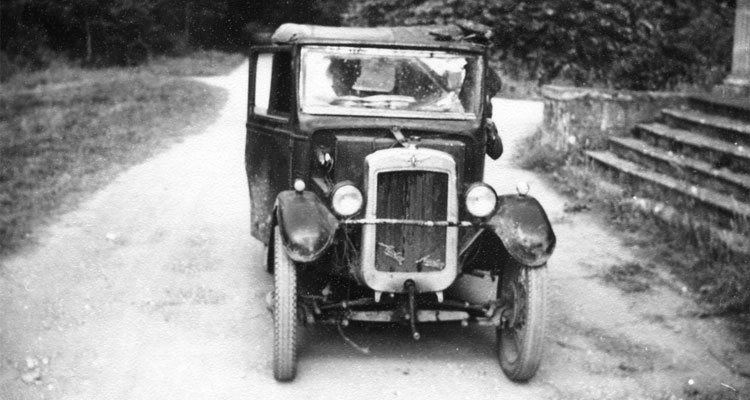A letter to the Editor of the Automobile Magazine, 1959
Dear Sir
On reading the recent issues of your excellent magazine, I noticed with interest the articles concerning Armstrong-Siddeley cars. These interested me especially as I have recently helped to make a “special” with an Armstrong-Siddeley engine. This was whilst I was at Stowe School where we had an International Combustion Engine Section of our Cadet force. In this section we were fortunate enough to have a 1926/7 Morris Cowley, affectionately known to us as “Baby Doll”, and an Austin Seven of similar vintage, less affectionately known as “Sputnik” or “Bleep”. It is the former car which we modified and until this summer was in original condition, but through the years it had gradually succumbed to the continual harsh treatment it had received at the hands of countless schoolboy drivers, who all at one time or another must have thought themselves budding Fangios. Consequently, it was no surprise when last May the clutch finally gave up the unequal struggle. Search parties went out for new clutches, but to no avail; on further inspection the gearbox was found to have given up the ghost also, gears one and two being almost stripped, so with all due ceremony “Baby Doll” was laid to rest in a hut overlooking a tranquil valley.
She lay there for a fortnight until one day a member of the section, overcome with nostalgia, came to pay his last respects and was lamenting the fact that he would have to scratch from the British GP at Silverstone (which was 1 ½ miles from us at Stowe) through lack of practice, when suddenly a thought struck him: “What about that Armstrong-Siddeley engine in the other shed, the one that they presented to us a few years back? Wouldn’t it fit into Baby Doll?” He sprinted off to tell the other members of the section about his idea.
The next day all the measuring equipment we could beg, borrow and steal was carried to the tomb and the most elaborate and, incidentally, inaccurate measurements were made. We decided that the project was definitely on, but that several alterations were necessary, for instance, the Armstrong-Siddeley 16 hp engine we had was about eight inches longer than the original Morris unit (this Armstrong-Siddeley engine is the one we think they installed in their Hurricane cars). The front bracing-piece on the chassis, which also held the radiator in place, had to be cut through to accommodate the larger engine. This would obviously weaken the chassis more than somewhat. So a new cross-piece was manufactured in the School workshops and belted to the chassis several inches further forward, meanwhile the original cross-piece cut through with the aid of an oxy-acetylene cutter borrowed from the School maintenance department. The next problem was how to get the engine in place without the aid of hoists which we did not possess (and even if we had had them, we couldn’t have used them for the roof of our shed is rather fragile). Eventually, we enlisted the help of a dozen small boys and, with the aid of two stout girders, lifted the motor into the frame, the remaining part of the front cross-piece acting as engine mountings at the front and the original rear mountings being used.
At this stage, we had thought of making use of the Morris back axle and prop-shaft, but someone uncovered an Armstrong-Siddeley prop-shaft attached to a rear axle of their make that had apparently been presented with the engine and gear box assembly; to accommodate these it was found to be necessary to cut down the transmission shaft by nine inches, which was again accomplished in a very short time thanks to our friends with the oxy-acetylene cutter.
So far, so good: but then someone happened to notice that the Morris rear wheels had three bolt holes, whereas the new Armstorng-siddeley axle had five studs. So off they were carried to the workshops and very soon it was noticed that something had happened to them and there were now five holes to fit the five studs. On they went. The next job: cooling. Not so easy. As we had no other radiator, the old Morris one had to do. Once on, a snag. No room for the fan. “Too bad, old boy, have to do without one!” So on we went with the next job of fixing the radiator, thanks to various and sundry lengths of plumbing and some rubber water piping which we must admit we had to buy. We at last managed to arrange things so that not too much water escaped at a time.
The operation completed, we were at last ready for the first road-test one fine Sunday afternoon. There being no room for a crank-handle, we had to get her to start on the button. Dare we hope? The engine had run well enough on the test bed but….? A pregnant pause. Suddenly, the motor burst into song. What harmony! It wasn’t really to most people, but to us it was music. “keep the revs up, just to be sure (which was, of course, exactly the wrong thing to do with the centrifugal clutch, ignorance is bliss!), get the passenger to select first gear (we had no lever as yet on the Wilson pre-selector box), steady with the clutch, you’re not used to this sort”, and all kinds of unwanted advice and away we drove in style. Unfortunately, this disturbed one or two folk who resented the lack of a silencer on the Sabbath. We did try to keep the noise down until we were out of earshot, where we really let her go and were amazed at the performance, and in sport of one or two irregular changes, first to the top, etc. (the passenger hadn’t quite got the knack of “feeling for the gears” yet), we had a most enjoyable ride down to the lakes where someone noticed that the water was not behaving itself (in the radiator, not the lake), so we stopped for the readily available liquid and headed for home, it now being almost dark. We went to bed that night at last, and we had got somewhere but there was still a lot to be done. The next day saw a further spate of activity in the shed while frantic attempts were made to find or make a bung for the radiator, which eventually boiled down to a cork bound in with wire – this was by no means infallible, as we were to find out to our cost more than once in out of the way places.
However, this temporary measure was good enough for short trail runs and we made several adjustments, which seemed to do some good anyway. All this was very near the end of term, and as the car was not licensed or, for that matter, in any fit state to be licensed, the roads and tracks in the grounds had to be our proving ground, although just what we were proving nobody really knew: all this was somewhat hazardous, with no front brakes, no handbrake, no floorboards, etc. Very soon, the end of term was upon us and the rejuvenated Baby Doll was locked away for a well deserved rest.
So, to the winter term: we decided that something drastic must be done with the cooling system, and so we wrote off to Armstrong-Siddeley Ltd, in the hope that they might be able to help us to locate a radiator that would allow us to use a fan. They did much more than this: their highly efficient spares department found us a good second hand one which they reconditioned before sending it to us with their compliments, together with a fan. This was for us a wonderful windfall, for without these parts the cooling system would have remained a constant worry and journeys of any length at all would have been impossible. The cooling system now functions with complete regularity and the section’s inexpert attention is being turned to other matters in need of it: among the more important things to be done is the fitting of a petrol tank. We run at present with a two-gallon can, labelled for some unknown reason, Racing Fuel. This is secured to the scuttle by various bits of frayed rope, which is adequate but not very beautiful to look at. The remaining members of the section are hoping to fit a tank at the rear a la MG Midget, a bonnet a la original Morris Cowley and windows, mudguards and floorboards a la nothing-in-particular,
So there we have her, a Vintage car with a very much post vintage propulsion unit (we can hardly call her a thoroughbred). At the moment, she is not very refined (as you will see from the photographs) yet she certainly goes and gives a great deal of pleasure and reliable use with a minimum of comfort and a fair share of danger to all who have the audacity to ride in her. I do not think that even our biggest optimist would try to call Baby Doll a sports car, but we have had as much fun in modifying her as if she had been a real thoroughbred Vintage Car.
Tim Dyke (Cobham 58)

